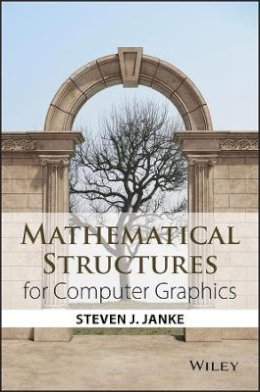
Stock image for illustration purposes only - book cover, edition or condition may vary.
Mathematical Structures for Computer Graphics
Steven J. Janke
€ 96.59
FREE Delivery in Ireland
Description for Mathematical Structures for Computer Graphics
Paperback. A comprehensive exploration of the mathematics behind the modeling and rendering of computer graphics scenes Mathematical Structures for Computer Graphics presents an accessible and intuitive approach to the mathematical ideas and techniques necessary for two- and three-dimensional computer graphics. Num Pages: 408 pages, black & white illustrations, figures. BIC Classification: UG; UYAM. Category: (P) Professional & Vocational. Dimension: 241 x 161 x 27. Weight in Grams: 736.
Read more
A comprehensive exploration of the mathematics behind the modeling and rendering of computer graphics scenes
Mathematical Structures for Computer Graphics presents an accessible and intuitive approach to the mathematical ideas and techniques necessary for two- and three-dimensional computer graphics. Focusing on the significant mathematical results, the book establishes key algorithms used to build complex graphics scenes.
...Product Details
Format
Paperback
Publication date
2014
Publisher
John Wiley & Sons Inc
Condition
New
Number of Pages
416
Place of Publication
New York, United States
ISBN
9781118712191
SKU
V9781118712191
Shipping Time
Usually ships in 7 to 11 working days
Ref
99-1
About Steven J. Janke
STEVEN J. JANKE, PhD, is Professor of Mathematics and Computer Science at Colorado College. He has over 20 years of teaching experience in the field of computer graphics and is the coauthor of Introduction to Linear Models and Statistical Inference, also published by Wiley.
Reviews for Mathematical Structures for Computer Graphics
“The book is suitable for undergraduate students of computer science, mathematics, and engineering, as well as an ideal reference for researchers and professionals in computer graphics.” (Zentralblatt MATH, 1 June 2015)
